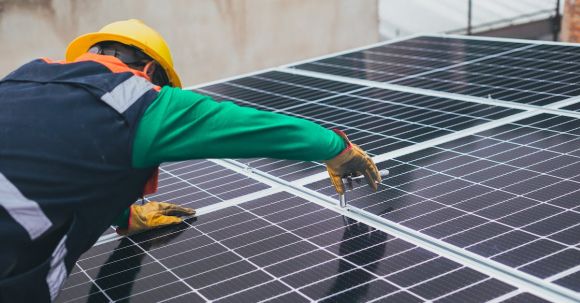As our world is becoming more conscious of the need for sustainable practices, it is important to explore innovative ideas for creating sustainable living spaces. From energy-efficient homes to eco-friendly materials, there are a variety of ways we can make our living spaces more environmentally friendly. In this article, we will discuss some of these ideas and how they can contribute to a more sustainable future.
Energy-Efficient Homes
One of the most important aspects of sustainable living spaces is energy efficiency. By reducing our energy consumption, we can decrease our carbon footprint and contribute to a cleaner environment. There are several ways to achieve energy efficiency in our homes, such as:
1. Insulation: Proper insulation helps to keep the temperature inside our homes stable, reducing the need for heating or cooling.
2. Energy-efficient appliances: Using appliances that are designed to consume less energy can significantly decrease our energy consumption.
3. Solar panels: Installing solar panels on our roofs can provide us with clean and renewable energy, reducing our reliance on fossil fuels.
Eco-Friendly Materials
Another important aspect of sustainable living spaces is the use of eco-friendly materials. Traditional construction materials such as concrete and steel have a significant environmental impact due to their production processes. However, there are alternative materials that are more sustainable, such as:
1. Bamboo: Bamboo is a fast-growing plant that can be used as a sustainable alternative to wood. It is highly renewable and has a low environmental impact.
2. Recycled materials: Using recycled materials, such as reclaimed wood or recycled plastic, can help reduce waste and minimize the extraction of new resources.
3. Green roofs: Green roofs are roofs that are covered with vegetation, providing insulation and reducing the urban heat island effect. They also contribute to air purification and stormwater management.
Smart Technology
Incorporating smart technology into our living spaces can also contribute to sustainability. Smart home devices can help us monitor and control our energy consumption, reducing waste and saving money. Some examples of smart technology for sustainable living include:
1. Smart thermostats: These devices can learn our daily routines and adjust the temperature accordingly, optimizing energy usage.
2. Smart lighting: Energy-efficient LED bulbs, combined with motion sensors and timers, can help reduce unnecessary energy consumption.
3. Smart water management: Water-saving devices, such as smart irrigation systems and low-flow fixtures, can help us conserve water and reduce our water bills.
Community Spaces
Creating sustainable living spaces goes beyond individual homes. Community spaces also play a crucial role in promoting sustainable practices. Some ideas for sustainable community spaces include:
1. Community gardens: Allotting spaces for community gardens not only promotes sustainable food production but also encourages social interactions and a sense of community.
2. Bike-sharing programs: Encouraging alternative modes of transportation, such as biking, can help reduce carbon emissions and promote a healthier lifestyle.
3. Sustainable infrastructure: Designing sustainable infrastructure, such as renewable energy systems and rainwater harvesting systems, can benefit the entire community.
In conclusion, creating sustainable living spaces is essential for a more environmentally friendly future. By implementing energy-efficient practices, using eco-friendly materials, incorporating smart technology, and promoting sustainable community spaces, we can contribute to a more sustainable way of living. It is important for individuals, communities, and governments to work together to implement these innovative ideas and create a greener world for future generations.





